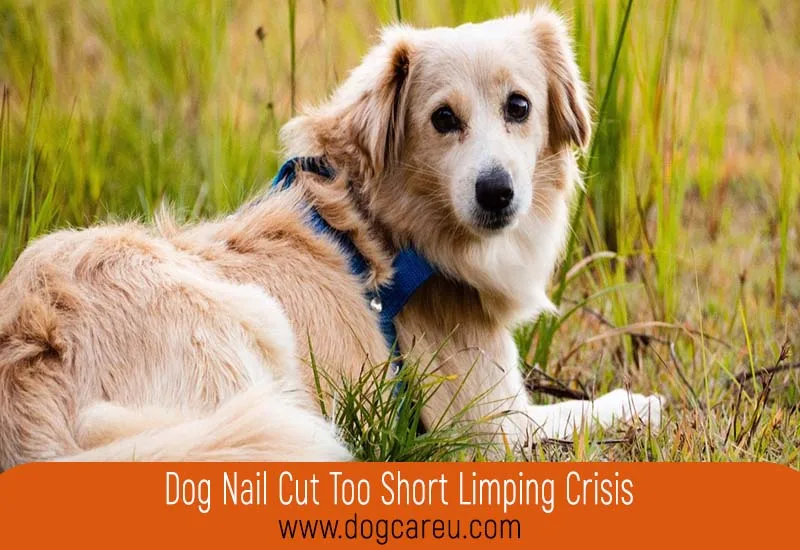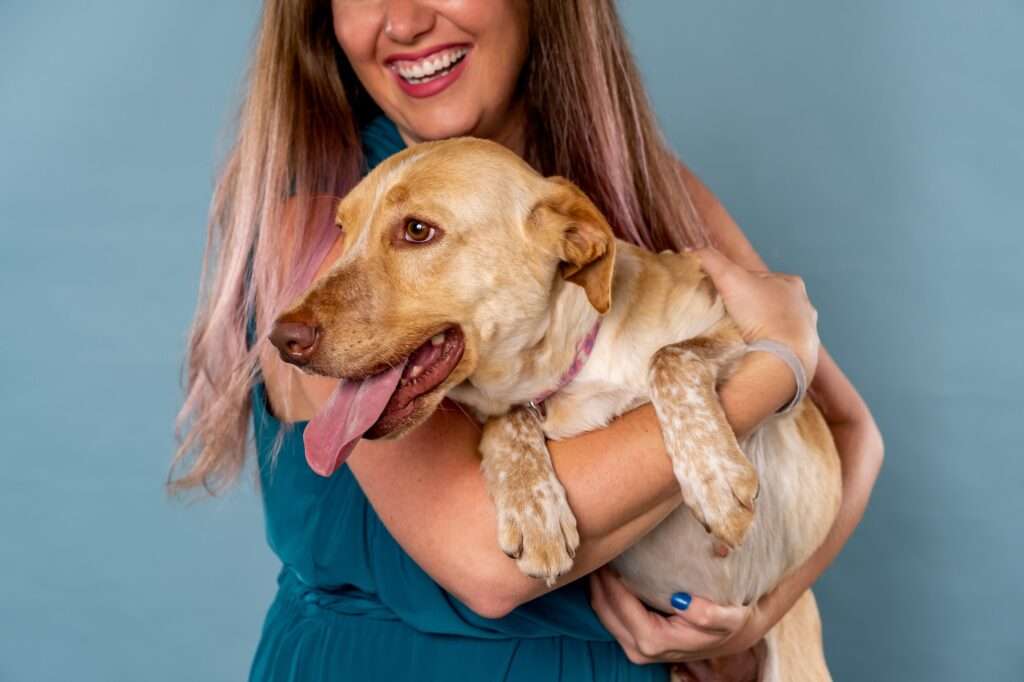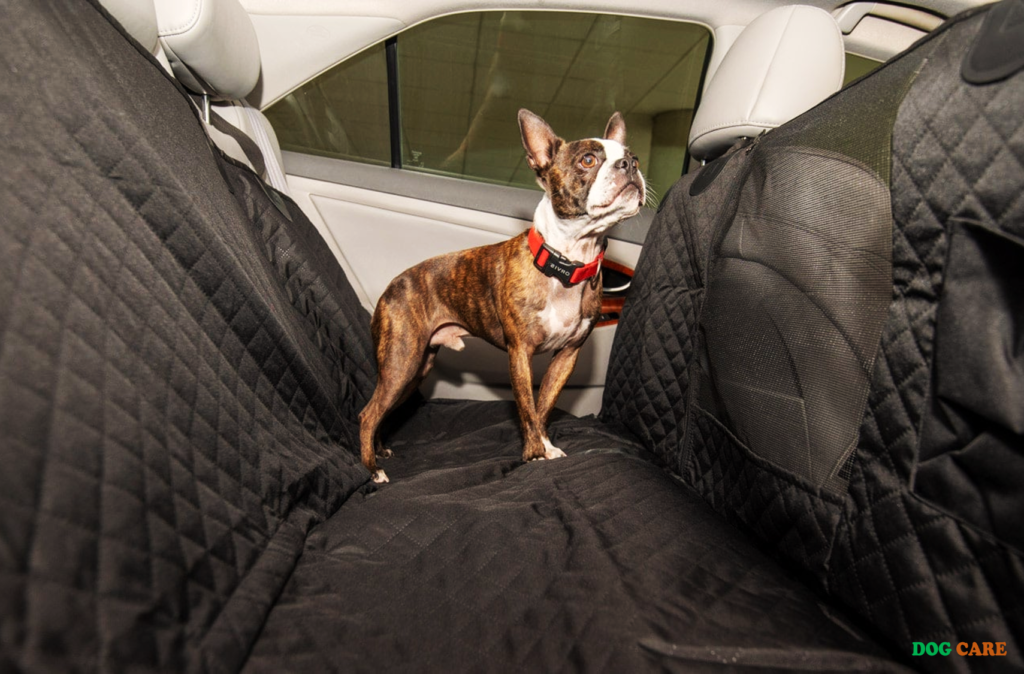Danger at the Groomer’s: Dog Nail Cut Too Short Limping Crisis!: If a dog’s nail is cut too short, it can cause limping. This happens because cutting the nail too close can damage the quick and cause pain and injury to the dog.
Accidentally cutting a dog’s nail too short is a common mishap that can happen during grooming sessions. While it may seem harmless, this mistake can lead to discomfort, pain, and limping in dogs. The quick, a sensitive part of the nail that contains blood vessels and nerves, is situated close to the nail tip.
When the nail is trimmed too close to the quick, it can get injured, causing the dog to experience varying degrees of pain. Understanding the signs and symptoms of a dog with a nail cut too short and learning how to prevent and manage this issue can help ensure the well-being of our furry friends. So, let’s explore the causes, symptoms, and remedies for a dog’s nail cut too short, as well as some helpful tips to avoid future accidents during nail trimming sessions.
What Happens When A Dog’s Nail Is Cut Too Short?
If a dog’s nail is cut too short, it can cause limping. The pain and discomfort can make them reluctant to put weight on the affected leg. It is important to be cautious and avoid cutting the nails too close to the quick to prevent this issue.
Understanding The Anatomy Of A Dog’s Nail
When it comes to understanding what happens when a dog’s nail is cut too short, it’s essential to first understand the anatomy of a dog’s nail. A dog’s nail consists of several parts, including the quick, the nail bed, the nail plate, and the nail tip. The quick is the sensitive living tissue that supplies blood to the nail and extends into the nail bed.
The nail plate is the hard outer covering of the nail, and the nail tip is the exposed part of the nail that we see. Dog’s nails require regular trimming to prevent them from growing too long. However, if the nail is cut too close to the quick, it can cause pain, bleeding, and other complications for our furry friends.
Consequences Of Cutting A Dog’s Nail Too Short
Cutting a dog’s nail too short can have several consequences for our canine companions. Let’s take a closer look at what can happen:
1. Bleeding and pain: When a dog’s nail is cut too short, it can result in bleeding and acute pain for the dog. The quick is rich in blood vessels and nerve endings, and cutting into it can cause discomfort and distress to our furry friends.
2. Limping and lameness: The pain caused by cutting a dog’s nail too short can lead to limping and lameness. The injured nail can be very sensitive, making it uncomfortable for the dog to put weight on that paw. This can cause an altered gait and an overall decrease in the dog’s mobility and activity level.
3. Infection and swelling: If the nail is cut too short, it can create an open wound that is susceptible to infection. Bacteria can enter the injured area, leading to swelling, redness, and pus formation. In some cases, an infection can become severe and require veterinary intervention.
4. Behavioral changes: Dogs that experience pain and discomfort due to a nail being cut too short can exhibit behavioral changes. They may become fearful or aggressive when approached or touched on the affected paw. It’s important to monitor their behavior and provide them with gentle and reassuring support during this time.
5. Long-term complications: In some cases, cutting a dog’s nail too short can have long-term effects. The repeated trauma to the quick may lead to the quick receding over time, making it more challenging to trim the nail properly in the future. It’s crucial to be careful while trimming their nails to prevent these long-term complications. In summary, cutting a dog’s nail too short can have various consequences, including bleeding, pain, limping, infection, behavioral changes, and potential long-term complications.
It’s important to take great care when trimming our furry friends’ nails to avoid these issues and ensure their well-being. Remember, if you’re uncertain about the proper technique or uncomfortable with trimming your dog’s nails, it’s always best to consult a veterinarian or professional groomer for assistance.
Signs And Symptoms Of A Dog With A Nail Cut Too Short
If your dog is limping after a nail cut, it might be an indication that the nail was cut too short. Other signs include bleeding, pain, and reluctance to walk. It’s important to seek veterinary attention to prevent infection and ensure proper healing.
Limping And Favoring The Affected Leg
Limping is one of the most apparent signs that your dog may have had their nail cut too short. They may begin to limp and show discomfort when walking or putting weight on the affected leg. Dogs have an instinct to protect themselves from pain, so they may start to favor the leg with the short nail by walking gingerly or holding it up slightly. It’s essential to pay close attention to any changes in your dog’s gait or if they start to exhibit signs of discomfort during movement.
Bleeding And Pain
When a dog’s nail is cut too short, it can lead to bleeding and pain. The quick, which is the sensitive core inside the nail, can be accidentally cut, causing bleeding. This can be a distressing sight for any dog owner, but it’s essential to stay calm and address the issue immediately. Your dog may start licking or biting at the affected nail, indicating discomfort and pain. It’s crucial to act swiftly to stop the bleeding and alleviate their discomfort.
Changes In Behavior And Mobility
In addition to limping and bleeding, a dog with a nail cut too short may exhibit changes in behavior and mobility. They may become more cautious or hesitant when walking, jumping, or climbing stairs. This change is their way of protecting the injured nail and avoiding further pain. Some dogs may also show signs of irritability or aggression due to the discomfort they are experiencing.
Keep an eye out for any changes in your dog’s behavior and seek veterinary attention if necessary. In conclusion, signs and symptoms of a dog with a nail cut too short can include limping and favoring the affected leg, bleeding and pain, and changes in behavior and mobility. It’s crucial to stay observant and take immediate action if you notice any of these signs to ensure your dog’s well-being and prevent any further complications.
Immediate Care For A Dog With A Nail Cut Too Short
Accidents happen, and sometimes it’s inevitable that we may accidentally cut our dog’s nails too short, causing them pain and discomfort. If you find yourself in this situation, it’s crucial to provide immediate care for your furry friend to alleviate any distress and prevent further complications. Here are the essential steps to take when dealing with a dog nail cut too short:
Applying Styptic Powder To Stop Bleeding
If your dog’s nail is bleeding after being cut too short, it’s important to act quickly to stop the bleeding. One effective solution is to use styptic powder, a useful tool for clotting blood and stopping minor bleeding.
Here’s how you can apply styptic powder to your dog’s nails:
- Gently clean the affected area with a clean cloth or cotton pad.
- Dip the tip of the bleeding nail into the styptic powder.
- Hold the powder onto the nail for several seconds to allow it to form a clot.
- If bleeding persists, reapply the powder and continue to apply pressure.
Keeping The Dog Calm And Comfortable
If your dog has experienced pain due to a nail cut too short, it’s essential to create a calm and comfortable environment to help them relax and recover. Here are a few tips to ensure your dog’s comfort:
- Keep them in a quiet, soothing area with minimal noise and distractions.
- Provide a soft and cozy bed or blanket for them to rest on.
- Speak to your dog in a gentle and reassuring tone.
- Avoid any activities that may cause additional stress or discomfort.
Monitoring For Signs Of Infection
After a dog nail has been cut too short, there is a risk of infection. It’s crucial to monitor the affected area for any signs of infection to ensure prompt treatment. Look out for the following symptoms:
- Redness, swelling, or excessive heat around the nail.
- Pus or discharge coming from the nail or surrounding area.
- Limping or favoring the affected leg.
- Loss of appetite, lethargy, or unusual behavior.
If you notice any of these symptoms, it’s important to consult with your veterinarian as soon as possible to prevent the infection from worsening.
Prevention And Precautionary Measures For Dog Nail Trimming
To prevent dog nails from getting too short and limping, it is important to take certain precautions. Use proper nail clippers designed for dogs and cut the nails carefully, avoiding the quick. Regularly examine the nails and seek professional help if needed.
Choosing A Knowledgeable And Experienced Groomer
It is crucial to choose a knowledgeable and experienced groomer when it comes to dog nail trimming. A groomer who understands the anatomy of a dog’s nails and has experience in handling different breeds can help prevent the risk of accidentally cutting the nail too short.
Look for a groomer who has specific training or certification in nail trimming and grooming techniques. This will ensure that they have the necessary skills and knowledge to handle your dog’s nails safely.
Ask for recommendations from fellow dog owners or your veterinarian. Reading online reviews or checking the groomer’s website can also provide valuable insights into their expertise and customer satisfaction.
Proper Equipment And Techniques For Nail Trimming
Using the proper equipment and techniques is essential for safe and effective dog nail trimming. Ensure that you have the following:
- Nail clippers or a grinder specifically designed for dogs
- Dedicated styptic powder or gel to stop bleeding in case of accidental cuts
- Adequate lighting to see the nail and avoid cutting into the quick
It is important to familiarize yourself with the correct technique to trim your dog’s nails. Start by gently holding your dog’s paw and extending the nail before making small, careful cuts. Gradually trim small sections at a time, ensuring not reach the quick.
Take breaks if your dog becomes anxious or uncomfortable. Remember, patience and a calm environment are key to a successful nail-trimming session.
Regularly Inspecting And Maintaining Dog’s Nails
Evaluating and maintaining your dog’s nails regularly is essential to prevent overgrowth and reduce unnecessary risks during trimming sessions.
Take the time to inspect your dog’s nails, looking for signs of overgrowth, splintering, or excessive wear. Regular physical activities on hard surfaces can help naturally wear down the nails and minimize the need for frequent trimming.
If your dog’s nails are too long, schedule regular trimming sessions to maintain an appropriate length. Keeping your dog’s nails at a healthy length will prevent discomfort, reduce the likelihood of accidental cuts, and decrease the chances of limping after trimming.
Remember, prevention is always better than cure, so take the necessary precautions to ensure a safe and stress-free nail-trimming experience for your furry friend.
Recovery And Rehabilitation For A Dog With A Nail Cut Too Short
If your dog has had a nail cut too short, it can cause immense pain and discomfort. However, with proper recovery and rehabilitation, your furry friend can heal and regain their mobility. In this section, we will discuss the steps you can take to help your dog recover from a nail cut too short, ensuring their comfort and well-being.
Consulting A Veterinarian For Further Assessment
When your dog has experienced a nail cut too short, it is crucial to consult a veterinarian for a thorough assessment of the injury. The veterinarian will examine the affected nail, surrounding tissues, and overall condition of your dog to determine the extent of the damage. Based on their evaluation, they will be able to recommend an appropriate course of treatment and provide guidance on the recovery process.
Pain Management And Anti-inflammatory Medication
To alleviate your dog’s pain and reduce inflammation caused by a nail cut too short, your veterinarian may prescribe pain management medication and anti-inflammatory drugs. These medications can help control the discomfort and promote a faster healing process. It is essential to follow your veterinarian’s instructions carefully and administer the medication as directed to ensure your dog’s well-being.
Physical Therapy And Supportive Care
Physical therapy plays a crucial role in the recovery of a dog with a nail cut too short. Your veterinarian or a recommended professional can guide you on the appropriate exercises and rehabilitation techniques to help your dog regain mobility and strength. These exercises may include gentle stretching, range-of-motion exercises, and weight-bearing activities to gradually rebuild muscle strength and prevent further complications.
In addition to physical therapy, providing supportive care is essential for your dog’s recovery. Ensure their environment is safe and comfortable, preventing them from further injuring the affected nail. Keep their nails trimmed and clean to prevent infection. Additionally, consider providing a balanced diet that promotes healing and includes essential nutrients.
With proper recovery and rehabilitation, your dog can overcome the challenges of a nail cut too short and regain their active and happy life. By consulting a veterinarian, managing pain with medication, and implementing physical therapy and supportive care, you can support your dog’s recovery journey to ensure a full and speedy healing process.

Conclusion
If your dog’s nail has been cut too short, it can lead to limping and discomfort. It’s essential to handle their nails with care and seek professional help if needed. Regular grooming and trimming can prevent accidental injury to your furry friend’s nails.
Remember, a happy and healthy dog has well-maintained paws.


